If you still want to use the ProUSB module for a USB connection to a server, you will need another ProISL module to plug into the DD. Unless you are using Quad USB module for USB input than you don't need the additional Pro USB-ISL modules.As @bryans posted above the info from Vince that a Digital Director will come with a ProISL input module and Control Link module for plugging into the DAC. The Digital Director already has the "hard-wired" ProISL output and Control Link (Toslink) for connecting to the DAC's ProISL and Control Link. Please see in the attached picture the "hard-wired" ProISL output on the DD.
View attachment 96580
The Digital Director - A new MSB product improving everything from the source to the output
- Thread starter CKKeung
- Start date
You are using an out of date browser. It may not display this or other websites correctly.
You should upgrade or use an alternative browser.
You should upgrade or use an alternative browser.
That’s what one would indeed expect if you read the marketing comms about the DD and indeed what one would conclude for the Quad USB module. One little problem though for the AES input: on the latest Premier version, the AES is fixed on the standard input/output module. So, the question is if the S/PDIF and AES inputs will be ”steered” by the DD throug the Pro-ISL link.According to the MSB's Digital Director information, all the inputs that were previously installed on the MSB DAC should be moved to the DD, including the AES and Pro USB-ISL inputs. Are you using the Pro USB or Quad USB module?
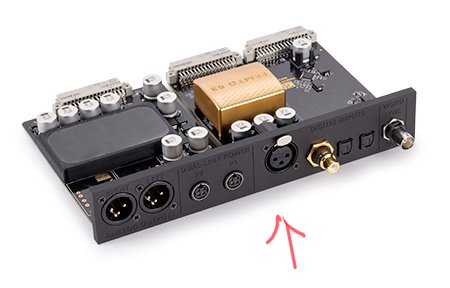
Have not tried DD. I don't think they are in the wild yet. My dealer knows I am very interested and is local to MSB sales.
I exchanged email with MSB a month ago re: some of the questions people seem to have, including myself. I ping-ed a few WBF folks and summarized in that email.
My understanding is the MSB folks are working on some video and perhaps FAQ assets for the site. I suggested a connection diagram would go a long way in clarifying things, IMO. BTW: I am a satisfied and interested customer. I have no business affiliation with MSB...I just want to hear that doggone Digital Director!
I exchanged email with MSB a month ago re: some of the questions people seem to have, including myself. I ping-ed a few WBF folks and summarized in that email.
My understanding is the MSB folks are working on some video and perhaps FAQ assets for the site. I suggested a connection diagram would go a long way in clarifying things, IMO. BTW: I am a satisfied and interested customer. I have no business affiliation with MSB...I just want to hear that doggone Digital Director!
Daniel introducing the Digital Directors on youtube :
Ha! You beat me to it, @CKKeung
From the US email announcement:
"Shipping the first orders will begin later this month and throughout December. The entire first production of Digital Directors is completely sold, so any new orders will have to wait for the second production which should conclude in January/February."
From the US email announcement:
"Shipping the first orders will begin later this month and throughout December. The entire first production of Digital Directors is completely sold, so any new orders will have to wait for the second production which should conclude in January/February."
We are in the WBF Newsletter special for the Digital Director. Here is the same data set here:
To best explain, it is necessary to talk about MSB’s leading edge technologies in the existing DACs.
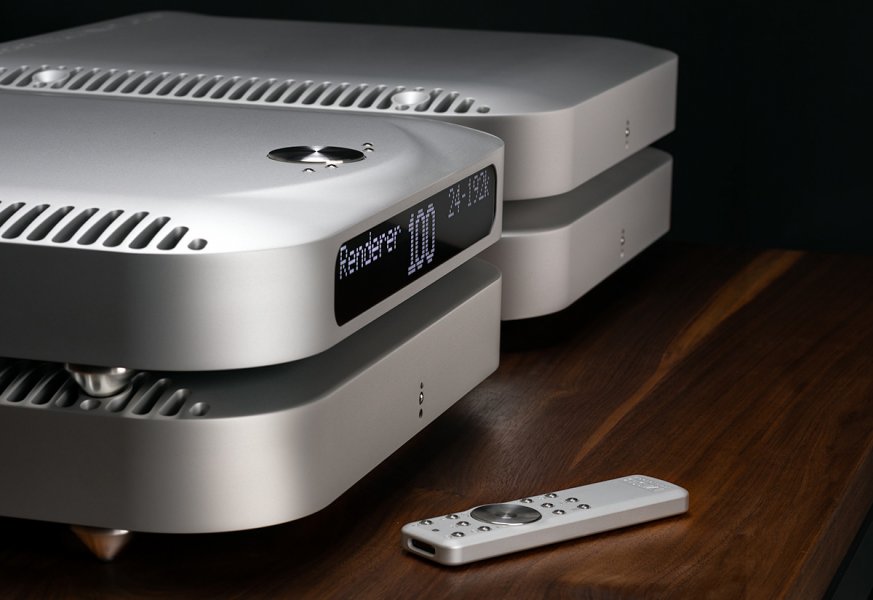
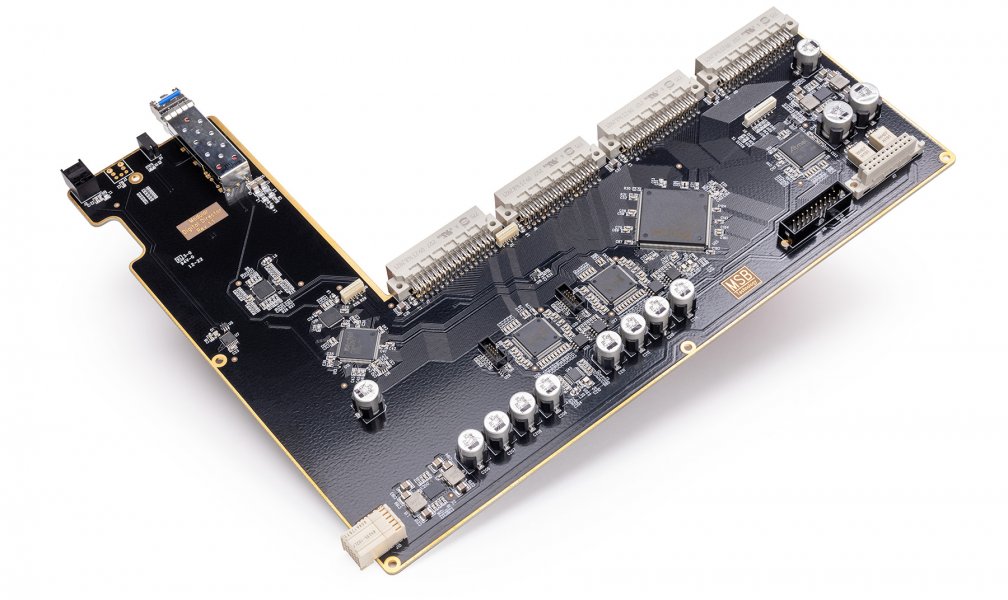
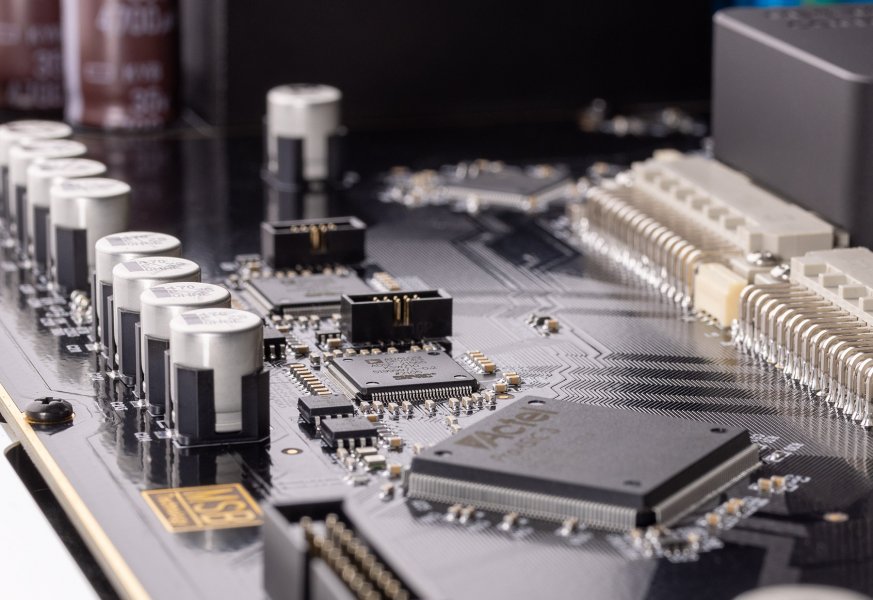
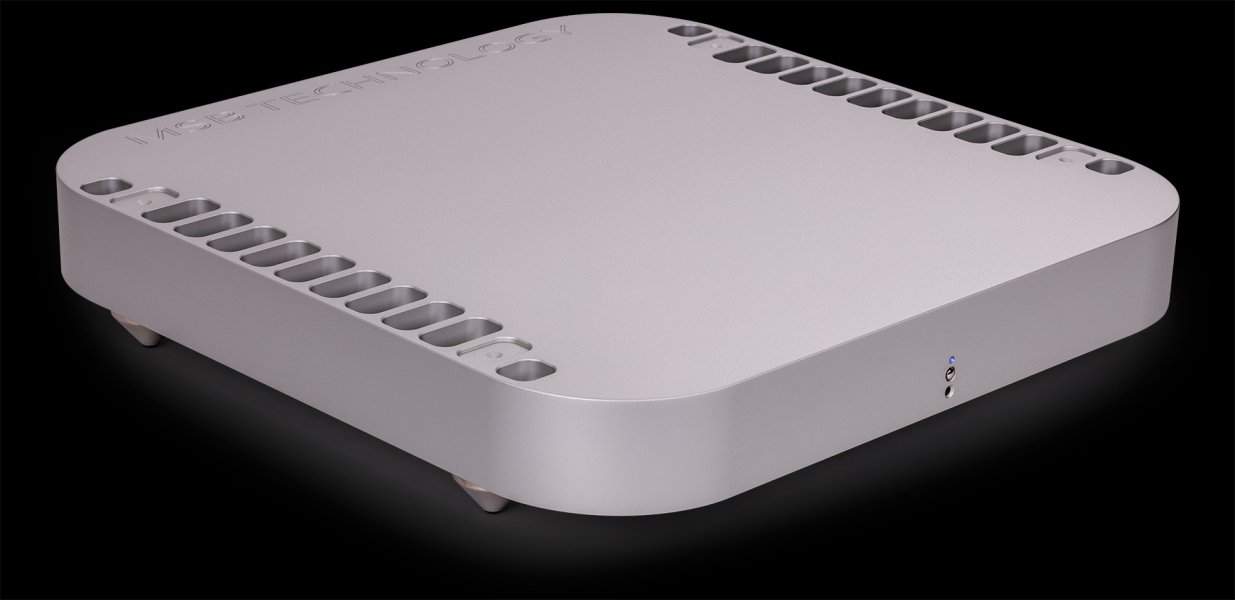
Continued...
The DAC reimagined
The Discrete, Premier, Reference and Select DACs have been acclaimed in reviews and audiophile forums for many years. Even now, their industry leading sound continues to make big impressions and shocking experienced audiophiles, new dealers and industry insiders. With the naturalness of the presentation, the concept of hunting for a particular “audiophile flavor” goes away. Natural music and the recorded space are clearly laid before us as intended. With the multiyear legacy of the current DACs, we are often asked when prospective buyers can expect a new DAC architecture from MSB. The answer is not relying on a new DAC, incurring huge upgrade costs, but empowering the existing MSB DAC models to their maximum potential with the Digital Director. With our future proof DAC designs, we realized the systems surrounding the conversion process are the weakest link and currently require the most attention. The Digital Director is the culmination of a three year project to augment and improve the Premier, Reference and Select DACs to a new level of performance. The Digital Director fulfills another of our long term commitments to allow our customers to retain the full value of their existing DACs by offering upgrades when new technologies are available. No need to sell your current DAC for a fraction of its value because there is a new model coming. The Digital Director will add many years to MSB’s current DAC lineup. This approach not only retains, but improves the pure performance from existing MSB DAC models by splitting the DAC into two separate components. The DAC chassis retains its extraordinary core D to A conversion engine while the Digital Director adds vastly superior digital filtering, physical isolation, and advanced optical electrical isolation from source and environmental noises.To best explain, it is necessary to talk about MSB’s leading edge technologies in the existing DACs.

Ladder DACs
It is important to know that all ladder DACs are not created equal. MSB’s existing DAC modules are the culmination of 22 years of experience and evolution in ladder DAC concept and design. The DAC modules no longer resemble conventional R2R ladder DACs with the newest design featuring very proprietary topologies and performance goals. These ladder modules are capable of 6 MHz for PCM and 50 MHz for DSD! It is very doubtful these speeds will ever be needed by any format now or in the future. While these speeds were not a specific design goal, the capabilities are a result of the extraordinary precision at many levels within the ladder DAC design. The absolute resolution and noise floors available from these ladder DAC modules are better than what is needed for the best possible audio. They feature true aerospace precision.Femtosecond clocks
Working in conjunction with the conversion ladders, our industry leading femto clock hardware was designed and created in-house from the ground up. Each clock module is actually two clock channels. One is 44.1 kHz and it’s multiples, the other is 48 kHz and it’s multiples. These dual femto clocks cover all formats and all sample rates required. MSB clocks produce true femtosecond accuracy. The Hybrid and Prime DACs combined with the ultra precision femto clocks create a core digital conversion engine able to convert any sample rate, format, or future formats that do not even exist yet! In summary, MSB’s current DAC models with their extraordinary ladder DAC/Femto clock core conversion engine will be at the leading edge for years to come.
The Digital Director
To improve upon the existing DACs, MSB has utilized newly designed semiconductors with massive increases to their processing potential. Preceding the core ladder/clock engine in the signal chain, the Digital Director design has taken the opportunity to offload the noisy high frequency processing into a separate chassis, fully isolated from the conversion process. With the advances in these processors, newly created digital filters that exceed our wildest dreams have more than eight times the resolution of our existing filters. While MSB is able to measure hardware performance down to extraordinary and vanishing levels of precision, digital filter creation will always be a bit of a black art. Luckily, we have more than 17 years experience writing digital filters which now have a stage to shine on. If this new vastly superior signal processing were the only improvement the Digital Director contributed it would be a very worthwhile addition. But there is more!
Source improvement
If a bit-perfect media player is used then the data from the first bit to the last bit of the song file is necessarily identical. Yes, bits are bits! Why do sources sound so different? The answer is electrical noise. Electrical noise can be powerful and intrusive. It is not necessarily an audible audio noise. Electrical noise generally plays havoc with DAC clocks, analog signal grounds, and other processes in any DAC or server. The Digital Director is designed to isolate this noise in an outboard chassis away from the DAC. With this design goal sources that we might consider to be lesser quality but are still bit-perfect are intended to be greatly improved. Indeed our best sources will also be greatly improved due to the superior isolation and greatly advanced signal processing of the Digital Director.Input quality leveling
Input quality leveling is closely associated with source improvements by virtue of the same technologies. If the data is all the same then why do different inputs sound different? It is a similar answer. Jitter and noise that varies depending on the type of input such as Toslink, RCA, XLR, USB and Renderer connections vary in their ability to transmit the data along with noise and jitter. Using multiple approaches the new Digital Director design goal is to isolate the data sent by these inputs and ignore the jitter and noise further improving the performance between all digital input connections and raising the performance of those connections as never before.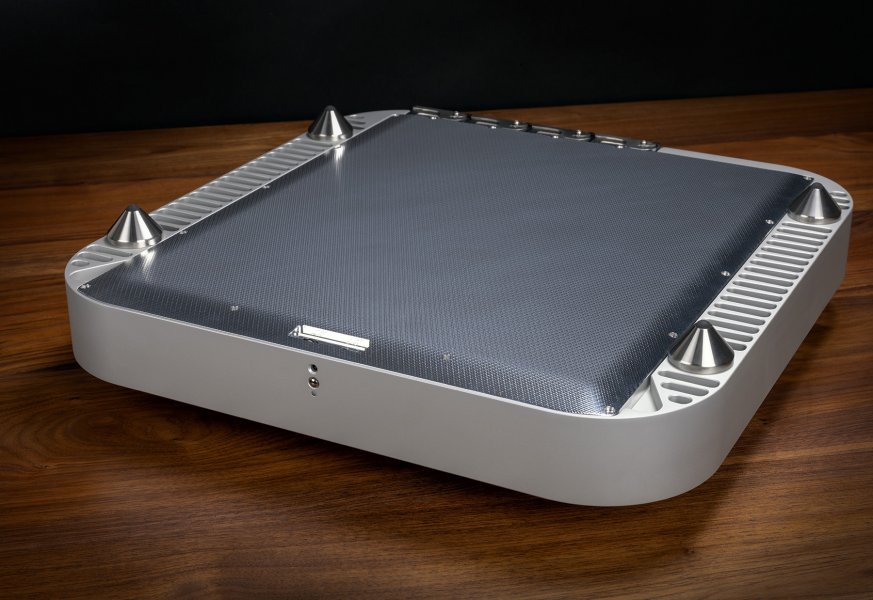
Isolation
Noise intrusion affects the DAC clocks, signal grounds and other processes. There can be significant sonic improvements when incoming noise is reduced. Noise can affect jitter anywhere in the digital chain. Zero jitter would mean the sample to sample data/clock pulses would be perfectly in time with zero variation in time between pulses. A creative solution to the problem is to have no audio master clocks in the Digital Director. One of the Director design goals is to isolate and read the data effectively isolating the data and ignoring the bombardment of noise from local ethernet modems, routers, switches, etc. The ethernet itself may be induced with Gigahertz frequencies from cell towers, TV and radio stations etc. Using MSB’s extraordinary Femtosecond clock in the DAC, the Digital Director is clocked by the Femto clock over the ProISL laser fiber optic system isolating the noise assuring very high precision clocking for all of the new Digital Director processes. This system yields extraordinarily low jitter which yields easily audible benefits.
Continued...
Attachments
-
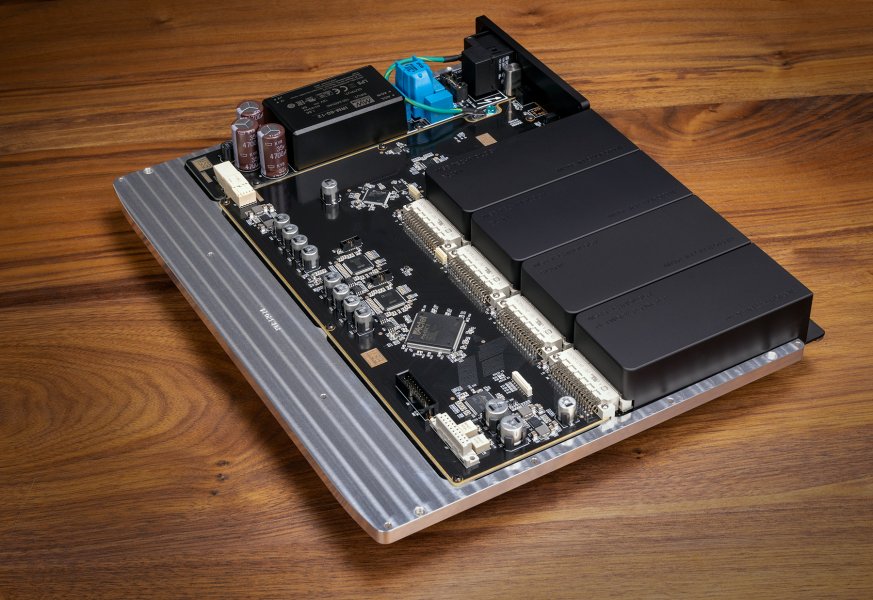 10202007---Premier-Digital-Director---Subassembly---Gallery.jpg686 KB · Views: 41
10202007---Premier-Digital-Director---Subassembly---Gallery.jpg686 KB · Views: 41 -
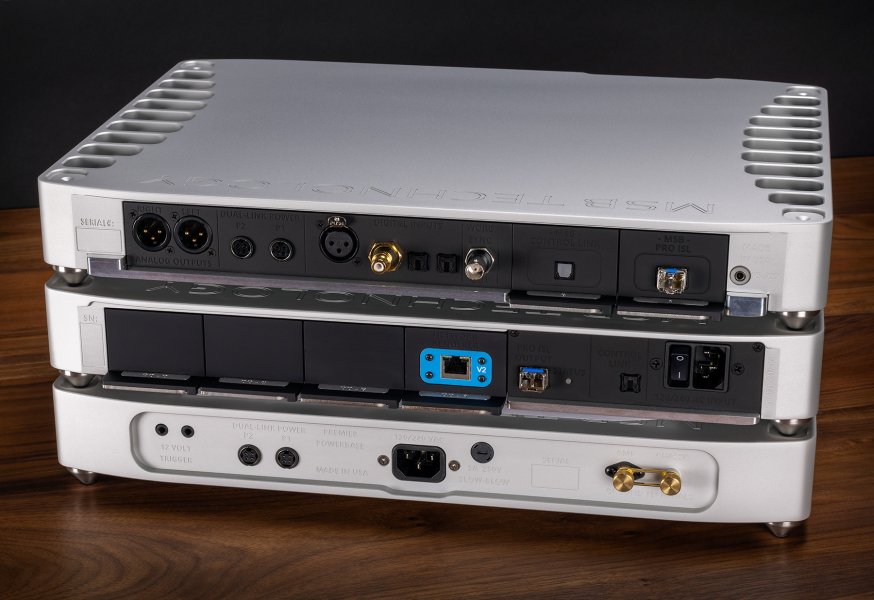 10202013---Premier-Director-and-DAC-Jack-Panel---No-Cables---Gallery.jpg506.6 KB · Views: 38
10202013---Premier-Director-and-DAC-Jack-Panel---No-Cables---Gallery.jpg506.6 KB · Views: 38 -
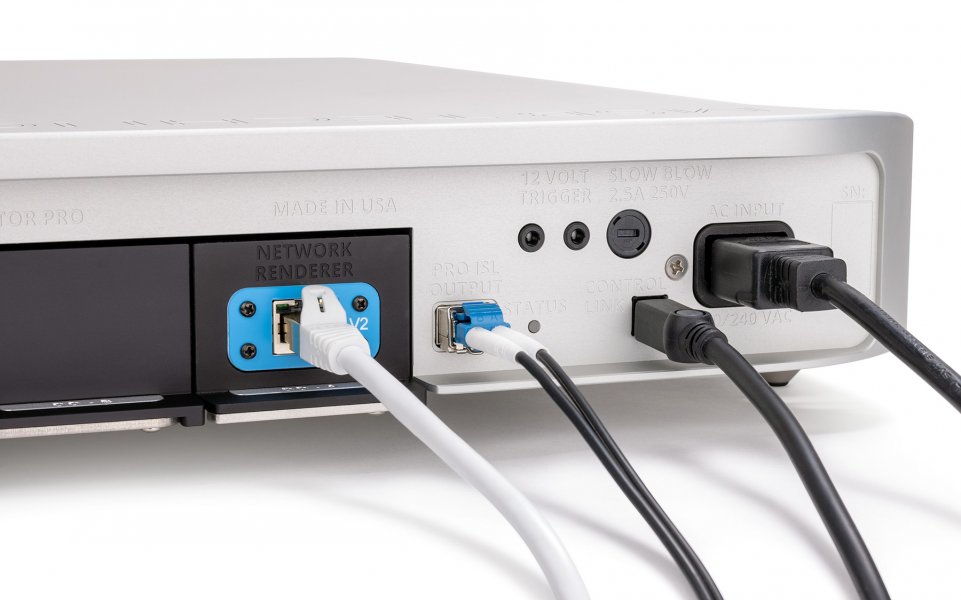 10403001---Select-Director-Connections.jpg295.9 KB · Views: 29
10403001---Select-Director-Connections.jpg295.9 KB · Views: 29 -
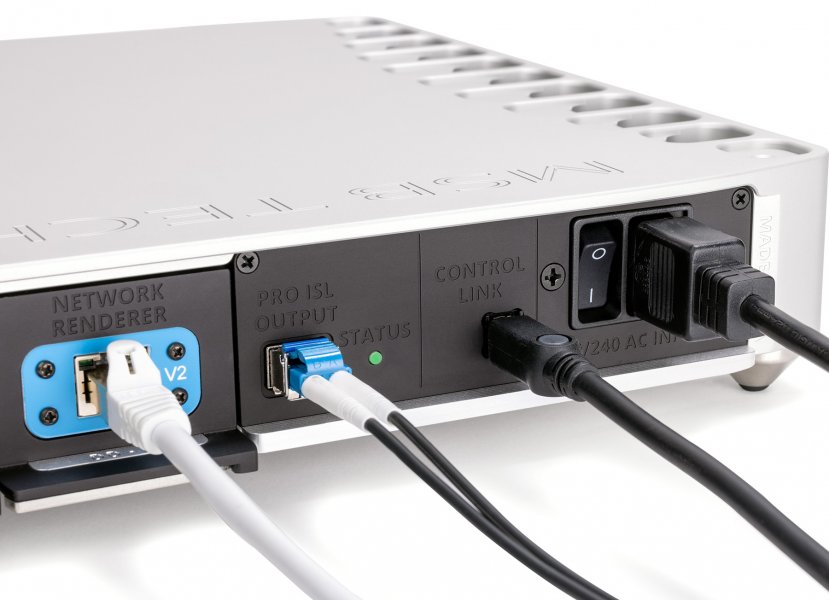 10202001---Premier-Digital-Director---Connections.jpg345.5 KB · Views: 28
10202001---Premier-Digital-Director---Connections.jpg345.5 KB · Views: 28 -
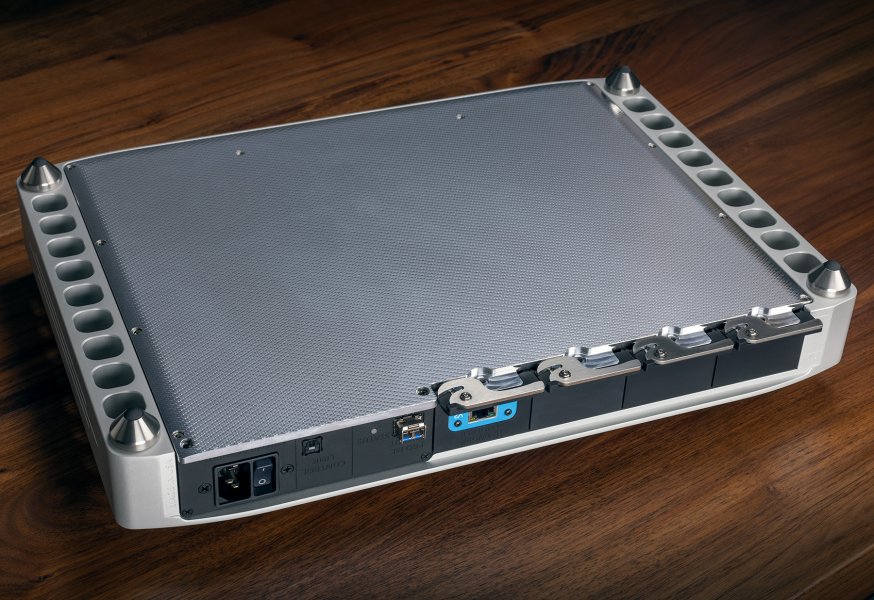 10202008---Premier-Digital-Director-Cover---Gallery.jpg803.4 KB · Views: 26
10202008---Premier-Digital-Director-Cover---Gallery.jpg803.4 KB · Views: 26
Your system and the sound
What will we hear by adding a Digital Director to an MSB DAC? Let’s talk a little about digital history. It seems that the digital artifacts caused by jitter and less precise D to A conversion cause the analog result to be scattered very slightly in time. This jitter is easily heard. It has been most noticeable on recordings that are dense with information meaning lots of frequencies often due to lots of instruments. With 300 instruments on the stage maybe it explains why over time classical music has been seemingly difficult for the digital medium to reproduce with true beauty and space. The same is true for horn sections, massed violins and instruments with rich harmonic texture like a close mic’ed piano or acoustic guitar. At first it seems the brain judges these artifacts as “more information”. But quickly we feel something's not quite right. How often have we experienced what seems to be more information but we are less comfortable? Customers and dealers tell us they are surprised to hear more information better describing the full voice of the instruments and humanness in the voices but with a truly relaxed non fatiguing presentation. There are no sonic flavors and no “preferences''. There is just music with dark backgrounds presented in a well defined space. We are often told there is a sense of a direct link to the studio master even being able to hear things like the recording equipment used or instruments and tracks being added later in the mix!We all have our favorite go-to recordings that we tend play to judge a new change in our systems. We have all had the experience of a positive change in our systems revealing a new light touch on a cymbal or a little piano or guitar part that we never noticed before even though we know these recordings so very well. These best recordings might number less than 20 or even 10! It is shocking to hear so many new things on these best recordings that it seems to wash over us constantly. Even more surprising are the second-tier recordings that are excellent except for some out of character moments like sibilance in the voice. The sibilance seems very out of character with the rest of an otherwise very good recording. In a specific test we put on Diana Krall Live in Paris. The piano is very well defined as is the acoustic space. We liken the sibilance to someone briefly tearing a piece of paper. It is a short burst of noise and it is annoying. This has been going on so long in our recordings among various systems we have always assumed it must be something to do with the recording, never to be recovered. With the Director now connected to the MSB DAC it became immediately obvious that the singer was very close to the mic. The mechanics of the mouth could be heard annunciating each word. Most shocking was the sibilance. It was replaced by the natural sound of air hissing through the singer’s teeth when a word that starts with “S” was pronounced. Much like one would expect if your ear were similarly close to the singer. The real sense of a human very close to the mic, and the naturalness was captivating. In a similar second-tier recording we listened to a jazz combo. The piano and drums were recorded well being very expressive. The sense of space was convincing. But when a group of horns came in to make a musical statement here and there they sounded congealed together and annoying. The horns were out of character with the rest of the recording. With the Digital Director the horns were now separated with the interplay of their harmonics being very natural. Gone was any sense of annoyance. It was a revelation and surprise to consider that the worst moments in the recording were maybe now, the most beautiful! Unlike our few best recordings these second-tier recordings described above number in the hundreds if not thousands broadening the scope of what we can listen to in an amazing way. Even the recordings that are heavily electronically processed seem to have a new truth that is revealing and easy to listen to.

Further evolving your audio system with the Digital Director
For consumers and industry professionals alike, the common goal of our wonderful high end audio hobby is to find the “choke points" in our systems. We continually listen to our systems scanning for the faults in the sound that we like and don’t like in our best recordings and especially our (more numerous) 2nd tier recordings. And so we may decide that the next-level opportunity to improve must be, as an example, the speakers (“that tweeter is slightly obvious and a little disconnected from the rest of the speaker”), or the amplifier, or the power quality, certainly it must be the cables!, etc., etc. The choices quickly become exponential and seemingly endless. It is a shame the poor speaker is so often blamed, but of course, that is what is producing the sound! The number of customers and dealers that tell us that their suspicious speakers are now completely integrated and utterly musical, is endless. The same is true of all other components in the system including cables. Indeed further evaluation of everything in your system will now be incredibly more obvious for its own contribution. For example, let’s say we compare two interconnects. We decide that interconnect “B” is better by some margin. Then we compare those same two interconnects with an MSB DAC in the system. The difference between the same interconnects becomes impossibly huge! It is often immediately obvious in the first few seconds after pushing “play”. Everything gets better across the spectrum of all of the things we judge audio by.In one session as we tested with various power conditioning cables etc, we hit upon an almost magic result. We had been repeating the intro of a wonderfully recorded acoustic guitar. The very first note was impressive and telling. As we improved the sound changing various things there came a time when the system seemed to suddenly cross a threshold. For a fraction of a second we heard the mics open and the recorded space bloomed out completely in our listening room! There seemed to be no specific sound like the air conditioning running or other obvious background noise. Somehow it was just the space dropped into our listening room. Everyone in the room looked at each other “did you hear that? what was that?. Of course the first note of the acoustic guitar was wonderful as was the rest of the guitar intro. What is going on here?? The answer is pure precision in D to A conversion. Very delicate information like the recorded space is precious and easily lost. When we hear space so well defined in our best presentations it follows that the delicacy of the overtones of complex instruments will also be presented in a beautiful and relaxing way. As we evolve our systems it is great news that the DAC is never the choke point. I have told our own company “I am not sure we have heard these DACs yet”. No matter what we improve peripherally in the system, amplifiers, cables, power quality, speakers speaker position, etc., MSB DACs with the Digital Director are very responsive each time showing a new level of naturalness and believability. The feeling that we need to adjust for tone or “flavors” is completely absent. The addition of MSB’s new Digital Director raises this concept once again, to a very high level.
Continued...
What is the best upgrade path?
For the Discrete the next level upgrade is the Premier. Everyone should have a budget they are comfortable with. Keeping that in mind the next level from the Premier is either Premier Director or the Reference DAC. Similarly for the Reference DAC one can upgrade to the Select DAC or add the reference Director, there are no bad choices here. The Reference Director is about halfway to the cost of the Select DAC. The various Digital Director models can be demonstrated by your dealer so you can easily decide.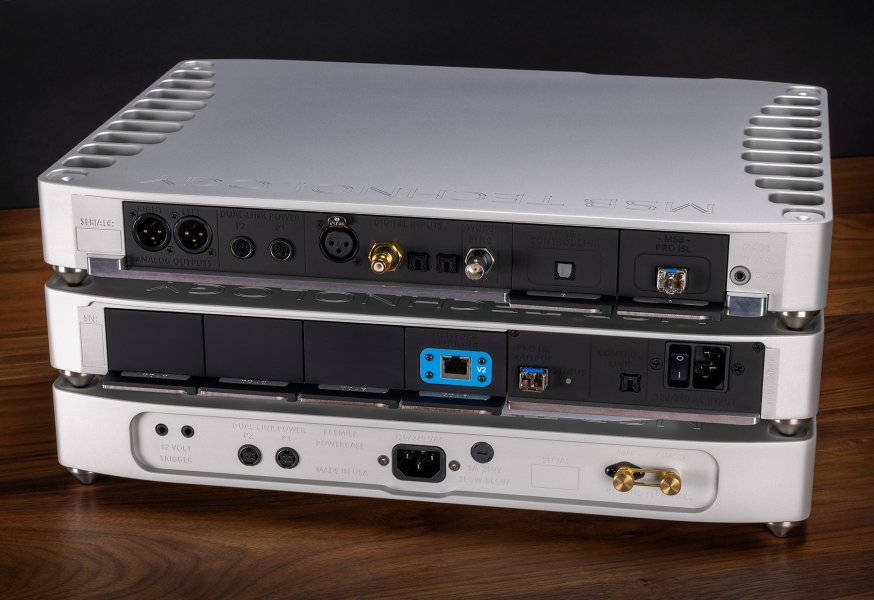
How is the Digital Director connected?
An MSB Pro ISL input module and control link module are installed in the Digital Director upon delivery. To start, remove all input modules from the DAC. Next, transfer the included Pro ISL and Control Link module from the Digital Director over to the DAC. Now, install the original input modules from the DAC into the Digital Director. The last step is to connect the provided Pro ISL and Control link cables. These connections between the Director and the DAC are a dual path clock/data laser-driven fiber optical cable. A separate fiber optic control cable sends commands for input switching and other functions to the DAC. This second fiber optic cable is only active during the actual remote control commands and is otherwise completely turned off. While using these optical connections, the Digital Director and the DAC are completely isolated.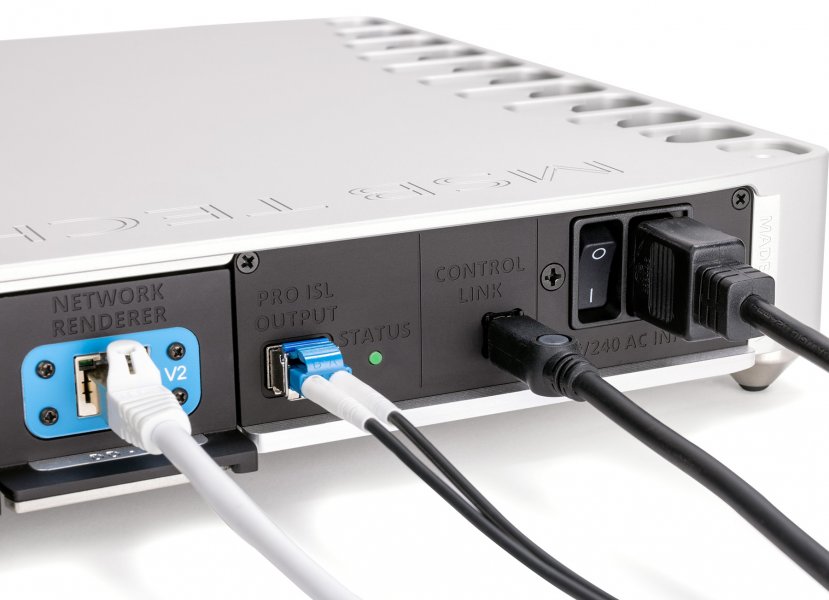
The future
MSB’s mission has always been to bring the customer along with the latest technology. The current DAC models combined with the Digital Director will be leading edge for years to come. Software updates that improve an MSB DAC’s sonic performance and functionality have always been a free download simply played like a song in your media player. The same will be true for the Digital Director. If and when future hardware improvements are achieved MSB’s mission has always been to make those improvements available with a continuing eye toward the best possible sound at an achievable and reasonable cost.The Digital Director mated with an MSB DAC is a new and significant plateau in the beauty and believability of recorded sound. We suggest you will hear the incredible capabilities of digitally recorded audio for the first time since its introduction in 1983.
The Digital Director is yet another example of MSB’s ongoing mission to evolve producing the best digital audio reproduction available and bring the customer along on next level technologies protecting their investment for years to come. We hope you will get to hear an MSB DAC with the new Digital Director at your dealer very soon.
Please contact MSB with further questions.
USA: Tel: 716-688-3527, vince@msbtechnology.com
International: sales@msbtechnology.com
Link to the website contact page:
https://www.msbtechnology.com/about-msb/contact-msb/
USA: Tel: 716-688-3527, vince@msbtechnology.com
International: sales@msbtechnology.com
Link to the website contact page:
https://www.msbtechnology.com/about-msb/contact-msb/
Vince, this is great stuff! Thank you for sharing. I'm considering upgrading to the Select II from my Reference. I'm still amazed at the natural sound I get from my Reference so the upgrade drive is more about curiosity...can it actually get better? The Digital Director adds another avenue in this pursuit.What is the best upgrade path?
For the Discrete the next level upgrade is the Premier. Everyone should have a budget they are comfortable with. Keeping that in mind the next level from the Premier is either Premier Director or the Reference DAC. Similarly for the Reference DAC one can upgrade to the Select DAC or add the reference Director, there are no bad choices here. The Reference Director is about halfway to the cost of the Select DAC. The various Digital Director models can be demonstrated by your dealer so you can easily decide.
View attachment 100771
How is the Digital Director connected?
An MSB Pro ISL input module and control link module are installed in the Digital Director upon delivery. To start, remove all input modules from the DAC. Next, transfer the included Pro ISL and Control Link module from the Digital Director over to the DAC. Now, install the original input modules from the DAC into the Digital Director. The last step is to connect the provided Pro ISL and Control link cables. These connections between the Director and the DAC are a dual path clock/data laser-driven fiber optical cable. A separate fiber optic control cable sends commands for input switching and other functions to the DAC. This second fiber optic cable is only active during the actual remote control commands and is otherwise completely turned off. While using these optical connections, the Digital Director and the DAC are completely isolated.
View attachment 100772
The future
MSB’s mission has always been to bring the customer along with the latest technology. The current DAC models combined with the Digital Director will be leading edge for years to come. Software updates that improve an MSB DAC’s sonic performance and functionality have always been a free download simply played like a song in your media player. The same will be true for the Digital Director. If and when future hardware improvements are achieved MSB’s mission has always been to make those improvements available with a continuing eye toward the best possible sound at an achievable and reasonable cost.
The Digital Director mated with an MSB DAC is a new and significant plateau in the beauty and believability of recorded sound. We suggest you will hear the incredible capabilities of digitally recorded audio for the first time since its introduction in 1983.
The Digital Director is yet another example of MSB’s ongoing mission to evolve producing the best digital audio reproduction available and bring the customer along on next level technologies protecting their investment for years to come. We hope you will get to hear an MSB DAC with the new Digital Director at your dealer very soon.
Please contact MSB with further questions.
USA: Tel: 716-688-3527, vince@msbtechnology.com
International: sales@msbtechnology.com
Link to the website contact page:
https://www.msbtechnology.com/about-msb/contact-msb/
I do hope that MSB decides to design and build an HDMI audio extractor and video pass thru module. The Digital Director seems the perfect vehicle to leverage this module. My wife and I enjoy dedicated two channel listening through my music server, but also enjoy Youtube music videos and movies through the same two channel system.
HDMI only sources for all but dedicated music servers or transports are ubiquitous now. To accomodate this in my system I need to run cable box and apple TV HDMI inputs into a cheap HDMI switch then HDMI out of switch to Oppo BluRay player used expressly for audio extraction (it sounds better than the audio extractors in the cheap switches), then video out to TV and SPDIF to MSB Ref. Oppo BluRay players were the only players to offer this audio extraction and they're no longer produced.
What should be a simple process to turn on the equipment and enjoy the music or movies is, in fact, very glitchy. It has certainly frustrated myself and especially my wife.
Ideally, the module would have two HDMI audio+video inputs and one HDMI video output, allowing switching between the two HDMI sources in the Director, but even if it was one input, one output, I'd buy two of them to meet my needs.
I'm with you on this one. My wife and I also enjoy watching YouTube videos.Vince, this is great stuff! Thank you for sharing. I'm considering upgrading to the Select II from my Reference. I'm still amazed at the natural sound I get from my Reference so the upgrade drive is more about curiosity...can it actually get better? The Digital Director adds another avenue in this pursuit.
I do hope that MSB decides to design and build an HDMI audio extractor and video pass thru module. The Digital Director seems the perfect vehicle to leverage this module. My wife and I enjoy dedicated two channel listening through my music server, but also enjoy Youtube music videos and movies through the same two channel system.
HDMI only sources for all but dedicated music servers or transports are ubiquitous now. To accomodate this in my system I need to run cable box and apple TV HDMI inputs into a cheap HDMI switch then HDMI out of switch to Oppo BluRay player used expressly for audio extraction (it sounds better than the audio extractors in the cheap switches), then video out to TV and SPDIF to MSB Ref. Oppo BluRay players were the only players to offer this audio extraction and they're no longer produced.
What should be a simple process to turn on the equipment and enjoy the music or movies is, in fact, very glitchy. It has certainly frustrated myself and especially my wife.
Ideally, the module would have two HDMI audio+video inputs and one HDMI video output, allowing switching between the two HDMI sources in the Director, but even if it was one input, one output, I'd buy two of them to meet my needs.
Why not just use toslink from TV to your Select IIVince, this is great stuff! Thank you for sharing. I'm considering upgrading to the Select II from my Reference. I'm still amazed at the natural sound I get from my Reference so the upgrade drive is more about curiosity...can it actually get better? The Digital Director adds another avenue in this pursuit.
I do hope that MSB decides to design and build an HDMI audio extractor and video pass thru module. The Digital Director seems the perfect vehicle to leverage this module. My wife and I enjoy dedicated two channel listening through my music server, but also enjoy Youtube music videos and movies through the same two channel system.
HDMI only sources for all but dedicated music servers or transports are ubiquitous now. To accomodate this in my system I need to run cable box and apple TV HDMI inputs into a cheap HDMI switch then HDMI out of switch to Oppo BluRay player used expressly for audio extraction (it sounds better than the audio extractors in the cheap switches), then video out to TV and SPDIF to MSB Ref. Oppo BluRay players were the only players to offer this audio extraction and they're no longer produced.
What should be a simple process to turn on the equipment and enjoy the music or movies is, in fact, very glitchy. It has certainly frustrated myself and especially my wife.
Ideally, the module would have two HDMI audio+video inputs and one HDMI video output, allowing switching between the two HDMI sources in the Director, but even if it was one input, one output, I'd buy two of them to meet my needs.
Because I use a projector.Why not just use toslink from TV to your Select II
If I did use a TV Toslink would be an option, but I also would guess the transmitter in the TV is very "jittery". An MSB solution for HDMI sources would be HUGE in my opinion!
Hi Vince,What is the best upgrade path?
For the Discrete the next level upgrade is the Premier. Everyone should have a budget they are comfortable with. Keeping that in mind the next level from the Premier is either Premier Director or the Reference DAC. Similarly for the Reference DAC one can upgrade to the Select DAC or add the reference Director, there are no bad choices here. The Reference Director is about halfway to the cost of the Select DAC. The various Digital Director models can be demonstrated by your dealer so you can easily decide.
View attachment 100771
How is the Digital Director connected?
An MSB Pro ISL input module and control link module are installed in the Digital Director upon delivery. To start, remove all input modules from the DAC. Next, transfer the included Pro ISL and Control Link module from the Digital Director over to the DAC. Now, install the original input modules from the DAC into the Digital Director. The last step is to connect the provided Pro ISL and Control link cables. These connections between the Director and the DAC are a dual path clock/data laser-driven fiber optical cable. A separate fiber optic control cable sends commands for input switching and other functions to the DAC. This second fiber optic cable is only active during the actual remote control commands and is otherwise completely turned off. While using these optical connections, the Digital Director and the DAC are completely isolated.
View attachment 100772
The future
MSB’s mission has always been to bring the customer along with the latest technology. The current DAC models combined with the Digital Director will be leading edge for years to come. Software updates that improve an MSB DAC’s sonic performance and functionality have always been a free download simply played like a song in your media player. The same will be true for the Digital Director. If and when future hardware improvements are achieved MSB’s mission has always been to make those improvements available with a continuing eye toward the best possible sound at an achievable and reasonable cost.
The Digital Director mated with an MSB DAC is a new and significant plateau in the beauty and believability of recorded sound. We suggest you will hear the incredible capabilities of digitally recorded audio for the first time since its introduction in 1983.
The Digital Director is yet another example of MSB’s ongoing mission to evolve producing the best digital audio reproduction available and bring the customer along on next level technologies protecting their investment for years to come. We hope you will get to hear an MSB DAC with the new Digital Director at your dealer very soon.
Please contact MSB with further questions.
USA: Tel: 716-688-3527, vince@msbtechnology.com
International: sales@msbtechnology.com
Link to the website contact page:
https://www.msbtechnology.com/about-msb/contact-msb/
Has MSB shipped demos of DD out to the dealers?
Hope that we can visit the dealers for an audition before Xmas.
Thanks?
Hi CKKeung!
The Digital Directors started shipping worldwide last week Wednesday. Please check with your dealer about when he will have his Digital Director order. With so many preorders, it is hard for us to be specific about individual orders.
We are excited to get feedback from our MSB owners as the Digital Directors are delivered.
Please ask any questions. I will do my best to answer them as time permits. Thanks!!
Vince Galbo
National Sales Manager
MSB Technology
The Digital Directors started shipping worldwide last week Wednesday. Please check with your dealer about when he will have his Digital Director order. With so many preorders, it is hard for us to be specific about individual orders.
We are excited to get feedback from our MSB owners as the Digital Directors are delivered.
Please ask any questions. I will do my best to answer them as time permits. Thanks!!
Vince Galbo
National Sales Manager
MSB Technology
Looking forward to receive mine. The new firmware version, to work with the DD, is already at MSB support page.Hi CKKeung!
The Digital Directors started shipping worldwide last week Wednesday. Please check with your dealer about when he will have his Digital Director order. With so many preorders, it is hard for us to be specific about individual orders.
We are excited to get feedback from our MSB owners as the Digital Directors are delivered.
Please ask any questions. I will do my best to answer them as time permits. Thanks!!
Vince Galbo
National Sales Manager
MSB Technology
I have updated my Reference DAC firmware in preparation for the arrival of my Reference Digital Director (the first in Australia). I expect that it will be running in my system in early 2023.
Hello,I have updated my Reference DAC firmware in preparation for the arrival of my Reference Digital Director (the first in Australia). I expect that it will be running in my system in early 2023.
Does the new firmware for the Reference DAC even work without installing the Digital Director? Maybe the new firmware will deactivate the power supplies and the digital processing required for all the digital input modules which were supposed to be connected to the DAC?
If this new firmware works, is there any change in SQ?
DAC works just fine on the latest firmware in the absence of the Digital Director. No sonic change that I can detect.Hello,
Does the new firmware for the Reference DAC even work without installing the Digital Director? Maybe the new firmware will deactivate the power supplies and the digital processing required for all the digital input modules which were supposed to be connected to the DAC?
If this new firmware works, is there any change in SQ?
If we don't upgrade with the Digital Director, are we supposed to update the firmware for the Reference DAC?DAC works just fine on the latest firmware in the absence of the Digital Director. No sonic change that I can detect.
Similar threads
- Replies
- 37
- Views
- 7K
- Replies
- 0
- Views
- 622
- Replies
- 58
- Views
- 14K
- Replies
- 43
- Views
- 13K
| Steve Williams Site Founder | Site Owner | Administrator | Ron Resnick Site Owner | Administrator | Julian (The Fixer) Website Build | Marketing Managersing |


